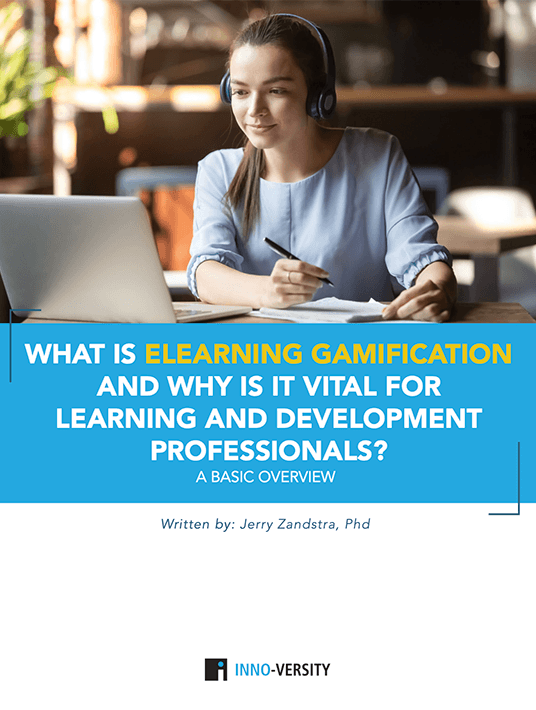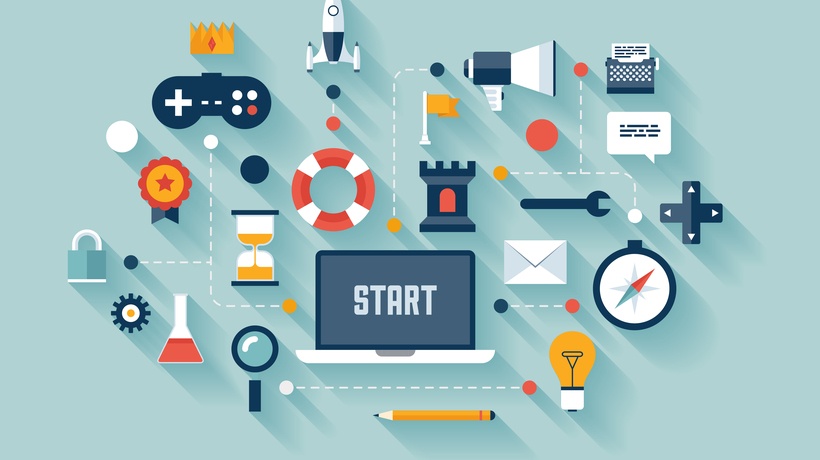8 Core Drivers Of Gamification
Motivation matters. The level of engagement in almost every human activity often depends on how motivated a person is to complete the task. What might motivate a child is different from what might motivate an adult. Adults vary widely in what motivates them.
Management theorists have been thinking about motivation for more than a century, especially in large organizations. Militaries around the world have endlessly studied what motivates young people to follow orders. And motivations change with the passing of time. What motivates someone in their 20s will likely be different than what motivates that same person in their 50s.

What does not change is that motivation matters. This is especially true in learning and training. Think about your development program in your own organization. Some training is simply mandatory, a job requirement. The only real choice is to accept or reject the mandate. An office worker might be required to take a course on forklift safety because that type of machine is in the building in which they work. But the office worker has never operated a forklift and cannot imagine a situation where they would be required to do so. Their motivation is low. It would be higher for someone who operates this type of machinery every day and remembers the accident that occurred two years ago when an operator without proper training caused an injury in the workplace.
Motivation matters in learning. And this is part of the attraction of gamification. Games are inherently motivational. Very few board or card games are played by families or friends because it was deemed mandatory. Playing the game is its own reward.
But even within an entertaining board or card game, there are subsets of motivation that entice people to engage and immerse themselves in the game. Players excitedly want to win or at least not to lose; to gain ground or protect what they already possess; to defend or attack. These are the things that draw us to play and encourage us to return to the game again and again. We may want to level up to demonstrate our mastery.
Using a game to advance learning, or simply building game elements into a learning tool can be powerful things. Done well, these approaches motivate learners to engage. Those who develop learning assets already know this. Come to think of it, this is why you are motivated to take the time to read this eBook.
There is no such thing as a single, overarching motivation in learning. Gamification requires that various kinds of motivation are recognized and incorporated when building learning assets. Yu-kai Chou, an internally renowned expert on gamification and behavioral design, and others working in the field have produced research and writings that help the learning and gaming industry identify and categorize some of the key motivators of learning. Inno-Versity recently sat down with Yu-kai and discussed the key elements of gamification. Listen to the podcast interview here.
There are at least 8 motivators available to those who want to gamify learning. These are put to use not just in gaming and learning but also on websites and social media. The key motivators fall into two categories: white hat and black hat.
The difference is simple. White hat motivators are mostly positive while black hat motivators are somewhat negative. It is important to recognize that people respond to motivators in different ways, depending on their personalities and life experiences. So using a variety of drivers will be needed to engage more people.
We’ll go over some examples below but keep in mind that white hat should predominate in learning. Black hat motivators less so. Too much black hat may result in game fatigue and frustration and that can lead people to stop playing. In smaller doses, it is, however, effective in adding a sense of urgency to engage a learner quickly.
It is also sometimes helpful to change the mix of motivators at different points in the learning experience. What might motivate someone at one stage in the learning asset may not be sufficient to keep them engaged long enough to complete the game. So, what are the specifics of each category? And how are they expressed in actual gamification platforms?
White Hat
1. Epic Meaning And Calling
Epic games provide an opportunity for learners to be engaged in something bigger than self. It might be a quest or a battle. It can mean being chosen for a special project or secret mission. Nintendo’s hugely popular Legend of Zelda is a good example of this type. This game appeals to people who want to make a difference, maybe even change the world.
2. Development And Accomplishment
This game driver promotes the feeling of pride as the learners overcome successive difficulties and advance through levels, facing challenges, or achieving mastery. Think Candy Crush Saga, the “game that keeps you craving more.” Players work across thousands of levels in the puzzle game, matching three or more candies in a row to advance. They can even “blast the chocolate” and win sweet prizes. This game appeals to those who like to see rewards and recognition for their efforts—publicly or privately.
3. Empowerment Of Creativity And Feedback
Learners are provided with a meaningful goal and the tools necessary to complete the game but they must strategize how they will achieve the goal. Leaners are given more than one path to success and can make meaningful choices and be creative in dramatically different ways. The paths provide different ways of winning but the path to success is not the same for every learner. A good example here is Minecraft, the best-selling video game of all time, which allows players to build structures, cities, and even entire worlds. These empowerment games appeal to those who like to make their own path in life, solve problems, and show unique creativity.
4. Social Influence And Relatedness
The motivation for learners is inspired by what other people think, do or say through mentorship, social acceptance, or companionship. Inspiration can also come from competition or even envy. The Farmville agriculture simulation game falls in this category. Extensive social cooperation is required for planting, growing, and harvesting crops and raising livestock. Farmville appeals to the gregarious and extroverts everywhere.
Black Hat
5. Ownership And Possession
When learners feel ownership, they want to obtain something, protect what they have obtained, or expand what they are able to possess. This motivator taps into the natural tendency to place higher value on what they own. Ownership includes how people value their identities and encourages them to be consistent with their commitments and decisions. The McDonalds Monopoly game works this way as customers collect pieces of the set to win prizes. This appeals to many who like to inventory possessions, collect things, or improve the world around them. It might even attract hoarders.
6. Scarcity And Impatience
When something is not easily attainable or immediately available, people want more of it. In the market, pricing is often determined by limiting the availability of an item. Think about eBay and other auction sites. There’s a FOMO (Fear Of Missing Out) element at work because the greater the scarcity, the more people will be willing to pay to possess that scarce thing. Conversely, greater availability rarely provides high levels of motivation. The difficulty of the challenge must increase with the skillset of the learner. Fear and anxiety come in to play. People who may tend to worry more may be driven by scarcity and impatience.
7. Unpredictability And Curiosity
People are motivated to learn more and do more when something falls outside what is expected or predicted. The distraction or unpredictability in this approach can grab the learner’s attention because they do not know what might come next and they want to discover it. It attracts people who thrive on variety or take chances. Any gambling games such as sweepstakes or raffles fall into this category.
8. Loss And Avoidance
This motivator involves learning by trying to avoid pain. The fear of losing something is powerful as is the desire to escape from undesirable results. Often, people will only take a risk if they have the potential to gain twice the amount of the potential loss. People who are afraid to lose or may have anxiety about the “what if” respond to this motivator. An example of this is the person who refuses to close a Facebook account, fearing disconnection from friends, even the loss of photos and videos uploaded to the account.
Sum It Up
To sum up, learning designers should carefully identify which driver or set of drivers will be most effectively built into the learning assets. It might be helpful to list the white hat and black hat categories to determine which will be included in the game. That conversation should happen early and it will be helpful to have clear direction at the very start.
One final suggestion. Take the time to play some games. Most well-known board and video games are built using at least one and often several motivators. Play the game and take some notes on which motivators are in play at different stages. Once players are aware of the motivators, the thinking of the game designers usually becomes obvious. Download the eBook What Is eLearning Gamification And Why Is It Vital For L&D Professionals? to discover how to bring eLearning gamification to your learning with solid theory and great case studies. Also, join the webinar on the same topic and find out how to create a winning eLearning gamification strategy.








![Leveraging An eLearning Gamification Strategy For Your Higher Ed Course [A Guide For L&D]](https://cdn.elearningindustry.com/wp-content/uploads/2020/08/Leveraging-An-eLearning-Gamification-Strategy-For-Your-Higher-Ed-Course.jpg)
